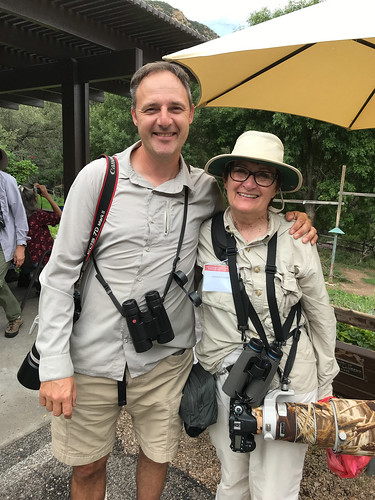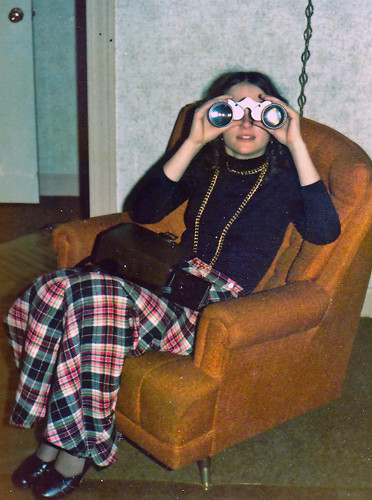A lot of people ask me for recommendations for binoculars. Back when I had a job with an optics retailer, I used to keep track of the various brands and models, but I don’t have access to test models anymore, and my focus has always really been birds rather than equipment.
I used to feel a little weird when people would call about a rumored new high-end product coming out a right after they’d bought a competing high-end brand, asking if I thought it would be worth it to exchange their new binoculars for even newer ones. I wanted so badly to ask why the heck they were still reading about binoculars when they had a brand new pair they should have been using—Why would anyone with excellent binoculars waste their time sitting around reading ever more material about optics when they could be out there using them to look at birds?
Even though I don’t keep track of brands and models anymore, my recommendations are pretty much what they’ve always been. My own favorites back when I could compare were Zeisses, and now I have their top-tier Zeiss SFs, but I could never have afforded them on my own—they were a gift. I’d make a blanket recommendation of Zeiss for people who can easily afford them except that I know too many people who prefer Swarovskis or Kowas—I can’t fairly compare because I haven’t tried recent models of any other binoculars. A lot of rock star birders get sponsored by optics companies. They wear branded baseball caps and other swag and strongly recommend their sponsoring brand, but the vast majority of them have not made fair comparisons.
The truth remains, as it has since I was evaluating binoculars, that the jump in discernable quality between $300 models and $3,000 models isn’t nearly as big as the jump between $50 binoculars and $300 ones. I absolutely believe that you should never spend more than you can comfortably afford—if you do, you’ll be afraid something bad will happen to them and will be less likely to bring them when you’re canoeing or biking. We did spend my family’s entire discretionary income in 1988 when I bought my first high-end binoculars, because I was counting birds and my eyes got seriously fatigued at the end of an 8-hour stretch looking up at the blue sky before eyeglasses had UV protection and my binoculars were slightly out of alignment. But those pretty cheap pocket binoculars had served me just fine for well over a decade. Now that I’m photographing birds, I’d put the lion’s share of my discretionary income into an excellent camera and lens—most of the birds I look at through optics nowadays are seen via my camera, not my binoculars anyway. A great many beginning birders also want photos of the birds they see.
If you are economizing on binoculars, remember that the quality of the lens coatings and quality glass for any price point are directly related to the magnification power. So if you’re buying a less expensive pair, you’ll get clearer optics the lower the power of a given brand and model. I’d never even consider getting inexpensive 10-power binoculars—for the cost of a given model, 7x or 8x would be much better.
Also remember that light gathering increases directly with the size of the outer, or objective, lens, and the higher the power, the more light you need. A good rule is to make sure the second number (the diameter of that objective lens in millimeters) should be at least four and, even better, five times the first number—the magnification power. So 7x28 or 7x35 is comparable in brightness to 8x32 or 8x40, or to 10x40 or 10x50. But the bigger that second number is, the heavier the binoculars are. Heavy binoculars are much more comfortable to use when you have them on a harness rather than a neck strap.
Once you buy a pair of binoculars, don’t waste energy second-guessing your decision. Get out there and use them. Don’t spend time studying other models until you’re ready to buy a second pair. I have my older binoculars set at windows overlooking our feeders so if I notice an interesting bird when I’m glancing out, binoculars will be right there where I need them. Birding optics are a useful tool, so use them to get out there and use them.
 |
| Laura in Arizona last year with the wonderful John Richardson. (I strongly recommend his guiding services!) Notice that we're both lugging binoculars and a camera. |

